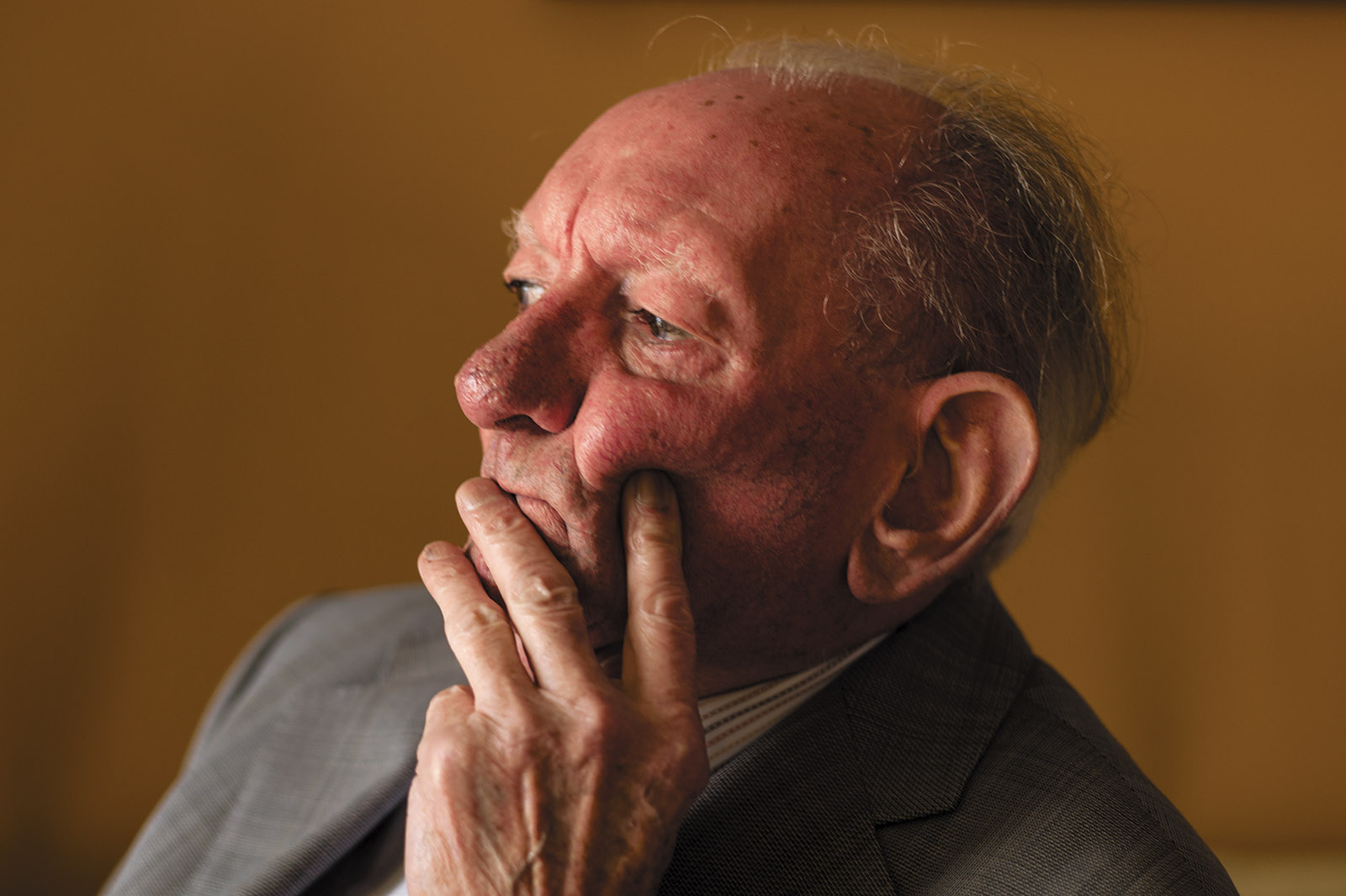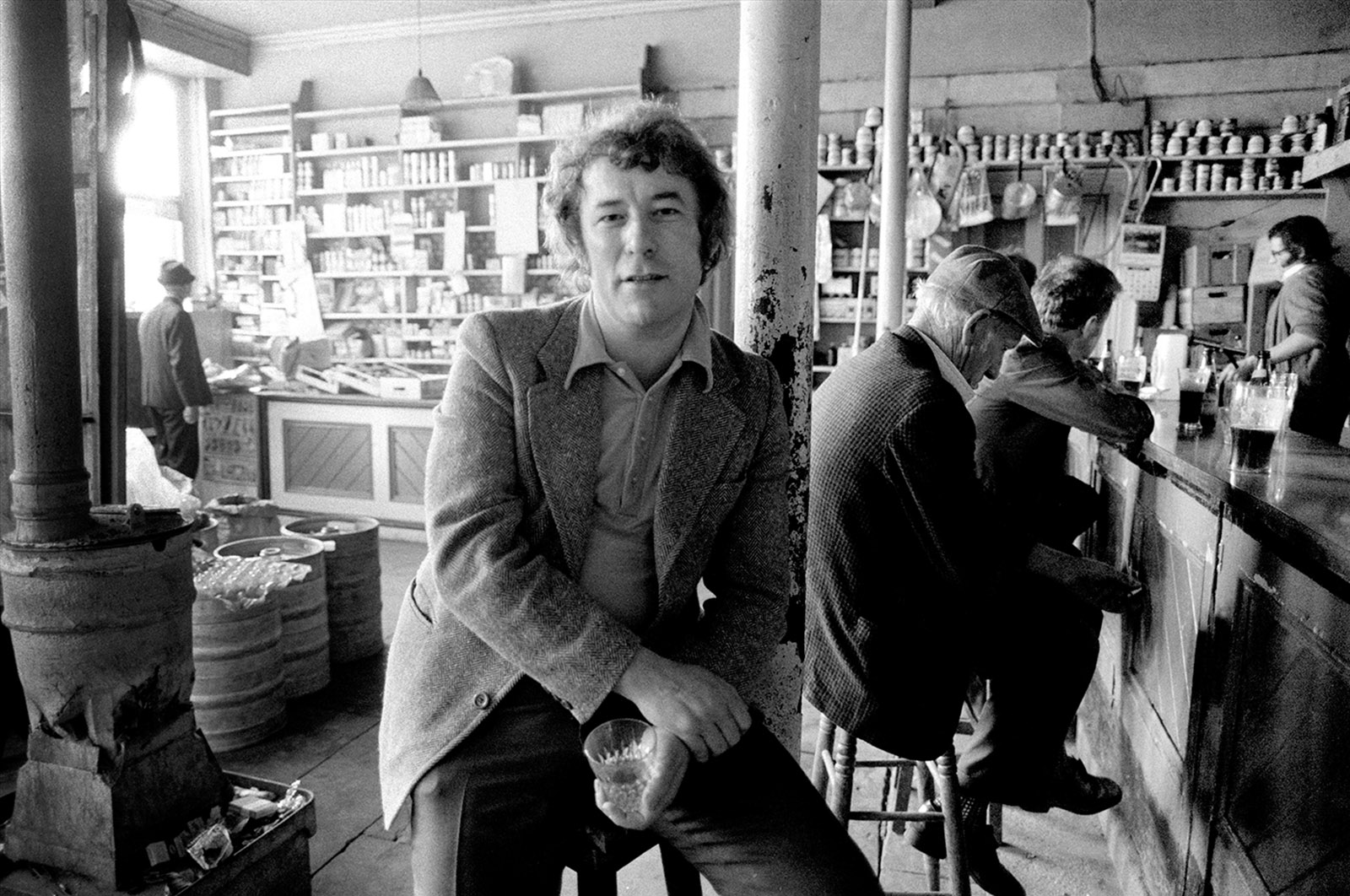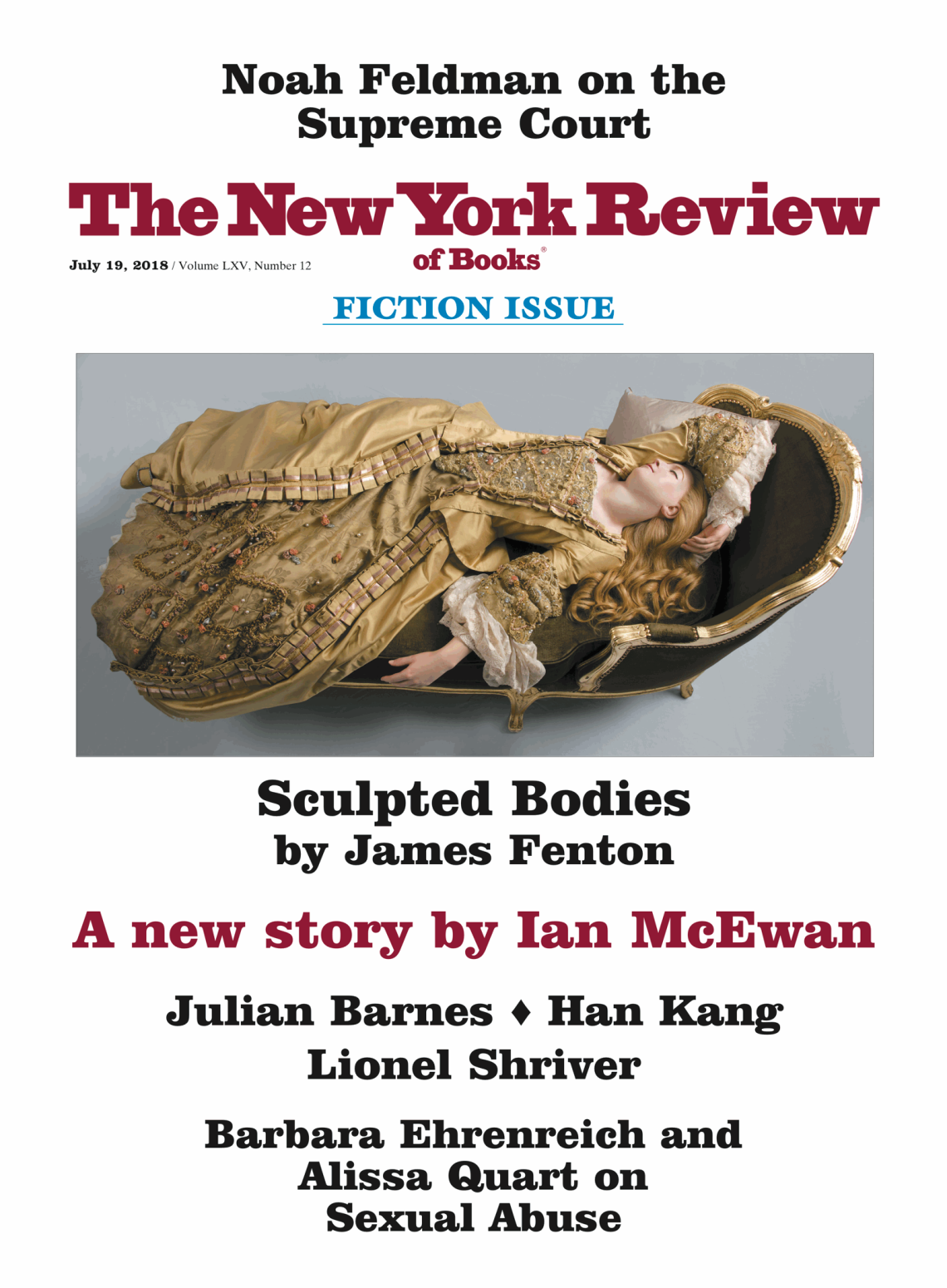“Confusion,” according to the schoolmaster Hugh in Brian Friel’s play Translations, “is not an ignoble condition.” Confusion is rife in Declan Kiberd’s energetic, imaginative, exasperating literary history After Ireland, both as a description of the current state of the Irish nation and as a reflection of his explosively scattershot approach to Irish cultural experience. The book follows Kiberd’s earlier surveys, Inventing Ireland, Irish Classics, and The Irish Writer and the World; Inventing Ireland in particular has exercised a huge influence on a generation of students, at once pioneering a synthesizing, comparative, and internationalist approach to Irish writing through the centuries and paying close attention to the fortunes of the Irish language. Kiberd is uniquely qualified to make these connections, and has been doing so since his markedly original and still indispensable study Synge and the Irish Language (1979), published nearly forty years ago.
Kiberd’s work continually returns to the theme of how the written word both reflects and complicates the idea of national identity. This preoccupation resurfaces in After Ireland, though it is not always clear where the argument is going, partly because of the book’s idiosyncratic construction. Chapters of varying length address individual works by a wide range of writers from the mid-twentieth century to the present. These are organized by specific work rather than author, so writers such as Friel or John McGahern recur in discrete compartments, rather than being the subject of extended study.
The sections of the book are separated by brief “Interchapters,” bearing titles such as “Secularization,” “Emigration,” “Northern Troubles,” and “Europeanization.” These interchapters are for some reason unpaginated (using the index is a hazardous pastime). They are identified by historical subject, so one expects the subsequent literary studies to sustain these themes. Thus an interchapter on the “Women’s Movement” is followed, logically, by a chapter on the poet Eavan Boland, which does full justice to the heft, influence, and elegance of her work. But the next three chapters of this four-chapter section are devoted to McGahern’s Amongst Women, Friel’s Dancing at Lughnasa, and Roddy Doyle’s Paddy Clarke Ha Ha Ha, shifting the focus unexpectedly away from feminist consciousness.
Several of the book’s chapters (such as the one on Richard Power’s neglected novel The Hungry Grass and a full-on discussion of Edna O’Brien’s The Country Girls) originated as introductions, essays, or reviews. This may partly explain the arbitrary structure of the book, and why some of the parts bear a rather eccentric relation to the whole. Kiberd’s sparkling and probing style goes some way toward overcoming this kaleidoscopic effect, but it is not always an easy ride.
There is also the abiding difficulty of “literary history,” in that it involves history as well as literature. Much in After Ireland concerns writers and their works (drama and poetry play as large a part as fiction), but the history of independent Ireland is pretty much left aside until the rather despairing “Conclusion,” of which more later. The late Taoiseach Charles James Haughey appears incidentally, described as “undecodable” (though several official and legal examinations decoded him all too clearly, as opportunistic, hypocritical, and corrupt); the Provisional IRA’s campaign is referred to in relation to the poetry of Seamus Heaney; and the importance of Ireland’s membership in the European Union is indicated, as are the freewheeling years of the “Celtic Tiger” boom and the subsequent hangover of the financial crash. The section following the interchapter on “Emigration” contains one chapter (a coruscating discussion of Friel’s breakthrough play, Philadelphia, Here I Come!). But important underlying themes of economic and political shifts remain unaddressed, as does the reflection of Irish history and its inheritances in works that are inexplicably missing here, such as Colm Tóibín’s novel The Heather Blazing or Sebastian Barry’s play The Steward of Christendom.
Tóibín and Barry have a powerful claim to being the most internationally recognized Irish writers of their generation, but they do not merit a mention in this lengthy but not exhaustive book. The Booker Prize winner Anne Enright is referred to only in passing, though women writers receive commendably generous consideration. Kiberd is apparently determined to advance writers who have received less attention or who have arrived more recently on the scene (Richard Power, Clair Keegan, Keith Ridgway, Éílís Ní Dhuibhne). This is a laudable approach, but it leads to some surprising omissions and emphases.
So does the wavering attention to the relationship between Irish writers and the Irish world. A discussion of Banville’s early novel Doctor Copernicus follows the interchapter on “Europeanization,” logically enough, but there is no discussion of his scorching roman à clef about the Haughey years, The Book of Evidence. But his later work is not addressed, allowing the questionable statement that he avoids “writing direct autobiography,” which is contradicted by the recent publication of his memoir, Time Pieces.
Advertisement
Many of the high points in the book concern the Irish theatrical tradition, so powerfully reborn in the period that Kiberd covers. The chapter on Tom Murphy’s The Gigli Concert is called “Theatre as Opera,” referring to W.H. Auden’s description of The Importance of Being Earnest as “pure verbal opera”—a concept applied perceptively by Kiberd to Murphy’s work in general. (It might be pointed out that Irish opera is undergoing its own renaissance, and that one of its recent successes has been an opera version of Wilde’s play by the composer Gerald Barry.)
The book begins with Beckett, who remains a constant reference point, and on whom Kiberd writes with unforced brilliance; his forthcoming book on Beckett as mystic is certain to move some goalposts decisively indeed. The idea that many of Beckett’s plays revolve around an “issueless…confrontation with conscience” that is identifiably and generically Protestant has become something of a critical commonplace, but it is worth closer investigation—notably in light of the way in which today’s audiences have, so to speak, caught up with his plays. Once considered forbiddingly avant-garde, they now pack theaters and are beloved by actors and directors—a spectacularly different fate from that of Yeats’s dramatic works. Equally striking, but also questionable, is the statement that Beckett believes “nothing is funnier than unhappiness.”
But the matter with Ireland (as George Bernard Shaw once put it) hangs uneasily in abeyance. Kiberd is not alone in his desire to Hibernicize Beckett, but the idea that the tragedies of Irish history (especially the Famine of 1845–1850) haunted his vision more immediately than his experiences during World War II and in the hospital at Saint-Lô is unconvincing. Kiberd also speculates that Beckett’s decision to write in French was undertaken
in order to submit himself to the experience of language change undergone by so many Irish in the nineteenth century, and to have re-processed early experiences in a second language allowed him to filter out some too pressing memories of his earlier years in Ireland; it was a means through which he would “forget” much of the past.
This brave notion does not seem grounded in any specific observation or evidence from Beckett’s life or letters; intriguing as it is, it does not replace the reason given by Beckett himself, “to get away from style.”
Kiberd has his reasons for foregrounding the language issue, and this is reflected in the generous treatment of Irish-language poets such as Michael Hartnett and Nuala Ní Dhomhnaill; there is also a notably high-octane chapter on Derek Mahon, though Michael Longley is another glaring omission. It is arresting to read how Kiberd finds ancient Irish sagas and heroes refracted in modern drama, notably in his bravura treatment of Friel’s great play Faith Healer; similarly, he draws attention to the way classical references are woven through a deceptively simple novel like McGahern’s Amongst Women. This breadth of reference also illuminates a stellar reading of Mahon’s poem “A Garage in Co. Cork,” though the text of the poem itself is never given in full, which is a pity. Here and elsewhere, the author may assume that his readership is as deeply marinated in the material as he is.
Kiberd is widely hailed as a marvelous lecturer and teacher, and his pedagogic style inflects this book, which revels in dandyish flourishes and offhand generalizations. Here, again, the mundane historian may feel an occasional impulse to protest. The Wildean premise that English people recognized that they endured fogs only when the Impressionists came to London and painted them should not be retailed as fact. The beguilingly antique statement that the diaries of the executed nationalist revolutionary Roger Casement, detailing his homosexual adventures, were “probably forged by the British authorities” has been comprehensively discounted by practically every biographer and historian who has addressed the question (the reprehensible use of them by the same British authorities to sway the case against his reprieve is another question).
It was not Beckett who referred to his winning the Nobel Prize as a “catastrophe” but his wife, which rather changes the implication. On p. 320 we read that
Eoin MacNeill, Gaelic historian and leader of the Irish Volunteers [before World War I], felt obliged to remind his men during manoeuvres that there was no such person as Cathleen ni Houlihan: just a country and its inhabitants for which they might have to fight.
But this exactly reverses MacNeill’s intended meaning; his statement originates not in an instruction to paramilitaries “on manoeuvres,” but in a reasoned memorandum that he wrote making the case against resorting to arms for the sake of an abstraction.
Advertisement
Here and elsewhere, there is a tendency to embellish a quotation in a way that changes its original meaning: thus, in repeating John Mitchel’s remark in his 1859 introduction to James Clarence Mangan’s Poems that the poet had two personalities, “one well known to the Muses, the other to the police,” Kiberd renders it “secret police,” introducing a dramatically Cheka-like implication. The police in nineteenth-century Ireland may have been draconian, but they were far from “secret.”
This taste for heightened drama and inclination toward painting in bold colors and challenging assertions have always made reading Kiberd a pleasure; the verve, insight, and imagination of the critical interventions in this book lie at the heart of its appeal. But there is a troubled note of interrogation too. In a stinging conclusion about the state of the nation, he returns to Beckett, the power of the imagination (and imagination suppressed), and “a culture that fed on abstinence.” By contrast, Kiberd believes that literary and artistic reflections of what he calls “Tiger Ireland” (the years of economic boom bridging the last fin de siècle) amounted to an evasive failure, with writers turning to the recent or remote past instead of nailing down the present. (Two very different examples of this tendency to glance backward are Frank McCourt’s best-selling misery memoirs and McGahern’s subtly inflected narratives.) A good deal of recent writing (Donal Ryan’s novels, Paula Meehan’s poetry) might be invoked against this.
Kiberd also sees, in an age of globalization, an avoidance of the theme of globalization by Irish novelists, despite Ireland’s international fashionability. Above all, he believes that the self-fashioning impulse of the nascent nation-state, so powerfully evident at the time of the literary revival of the early twentieth century, had been exhausted by the time of late-twentieth-century prosperity. He posits that intellectuals and artists were ignored by the powers of the state, and for their own part withdrew into a kind of internal exile—exacerbated, he points out, by the way that the IRA “helped to discredit the language of ‘patriotism’ by their casual slaughter of civilians.”
Kiberd also mentions the decay of the scandal-ridden Catholic Church’s social and moral authority (resoundingly confirmed by the results of the recent abortion referendum), and the loss of economic autonomy to the central authority of the European Union after the 2008 crash and bailout; railing against the takeover by multinational companies and agricapitalism, he quotes the often-derided 1943 speech of the Taoiseach Éamon de Valera calling for a revival of traditional rural and religious values, which Kiberd unconvincingly credits with an “insurrectionary intensity.” At the same time, he delivers a thoughtful elegy on the fate of the nation-state and decries the effects of austerity. Unlike most Irish intellectuals, he seems wary of the benefits of EU membership. Renewing the project of national independence, he believes, requires a new revival, singling out culture as the road to self-recognition, in the manner of Hyde, Yeats, and Pearse a century ago.
Much of the work surveyed in this book, and some of the material it leaves out, suggests that a process of self-examination may be happening, if not exactly in the way that Kiberd prescribes. Like Raymond Williams or Richard Hoggart in a very different era, he is determined to place the practice of literary criticism at the center of the critique of national life. Ironically, this echoes the precepts of Matthew Arnold, usually a demonic figure for nationally conscious Irish intellectuals because of his stereotyping of “the Celt” and his highly selective view of national cultures. Confusion can take many forms—especially in a country where, as Hugh in Friel’s Translation also reflects, to remember everything is a form of madness.
This Issue
July 19, 2018
Tipping the Scales
Düssel…
A Work of Art




